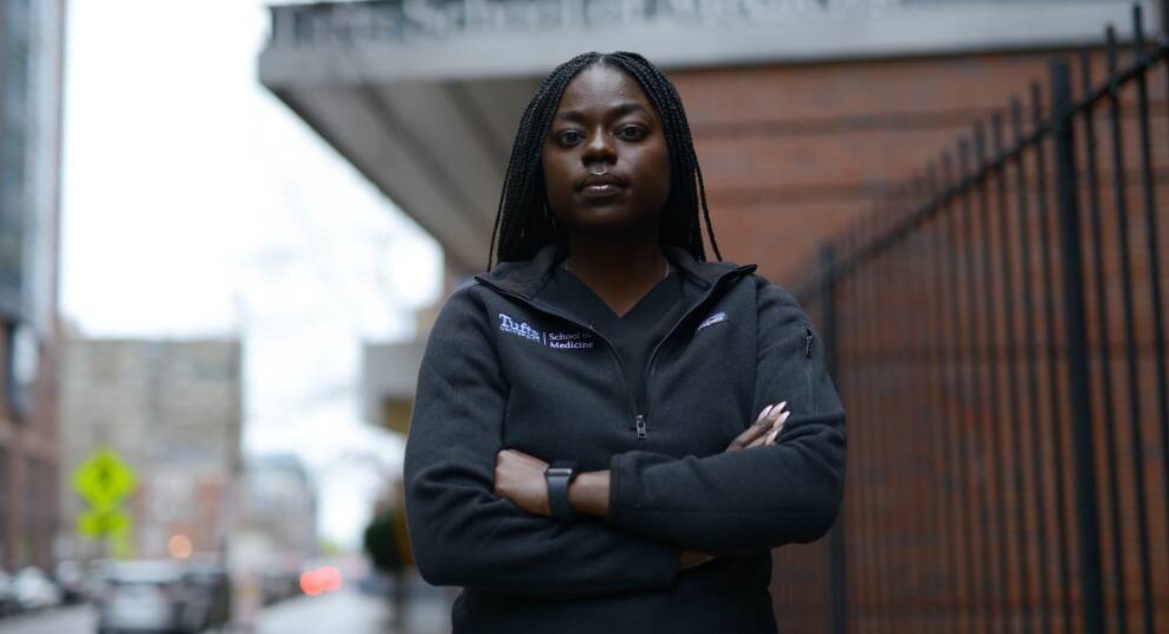Medical schools see record enrollment increase among Black students

Sabrina Lima, a first-year student at Tufts Medical School in Boston, on the school’s campus on Jan 5, 2021. (Meredith Nierman/GBH News)
Sabrina Lima said her mom, a nurse, inspired her to pursue a career as a doctor.
“I’ve been on medical missionary trips with her, so seeing her in medicine — she’s this amazing woman,” she said. “I just love how she serves others, and I want to serve people in a similar way.”
Lima, the daughter of Haitian immigrants, began classes at the Tufts Medical School in the fall. She is part of a small group of Black students pursuing careers as physicians, though that number is increasing as schools adopt new procedures to attract and reduce barriers for students of color.
Among Tufts’ 195-member class of 2025, Lima is one of 26 students who identify as Black or African American — a major jump from nine the year before. And across the country, the number of first-year Black students is up 21%, an unprecedented spike since 2020.
“We have never seen such an increase within a short amount of time,” said Norma Poll-Hunter, who leads workforce diversity efforts at the Association of Medical Colleges. She points to research that shows, across all races, patients are more likely to report satisfaction with their care when their doctors look like them.
But only 5% of the country’s doctors are Black, according to the association’s latest data, released in 2019.
“When Black physicians, male physicians are working with Black male patients, we see better outcomes in preventative care or on cardiac care,” Poll-Hunter said. “We’ve also seen that in terms of infant mortality, as well.”
To address health disparities afflicting Black people, Poll-Hunter said more medical schools are looking beyond test scores, waiving application fees, allowing more students to interview remotely and looking more seriously at the role of unconscious bias in their admissions procedures.
Poll-Hunter said medical schools were already aware of these barriers, but the death of George Floyd and racial justice protests “really called into question this idea of a post-racial society.”
That acknowledgment is leading to more diversity on campus, said Joyce Sackey, dean for multicultural affairs and global health at Tufts.
“We’ve been working hard at this,” she said, adding that the ongoing racial reckoning has served as inspiration for admissions officers to re-double their diversity efforts. She said they need to take a second look at applicants from underrepresented communities, to provide more need-based scholarships rather than merit-based, and to make sure students know their school stands for equity.
“Medical schools are like the Titanic,” she said. “It’s very difficult to move policies and processes, to be honest. But we are a medical school that has declared that we want to work towards becoming an anti-racist institution. This stand may have also signaled to applicants whom we accepted that maybe this is a place that they can make home.”
The financial burden of medical school is one major obstacle to attracting under-represented students and making them feel at home. On average, graduates finish more than $240,000 in debt.
Read the rest of this story and hear the audio version at WGBH.org.
